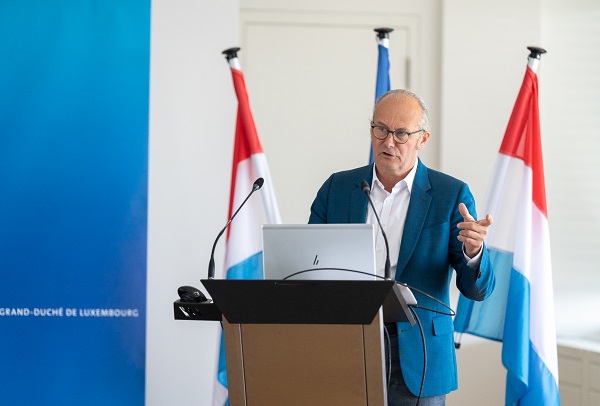 Claude Turmes, Luxembourg's Minister for Energy and Spatial Planning;
Credit: MEA
Claude Turmes, Luxembourg's Minister for Energy and Spatial Planning;
Credit: MEA
At a press conference on Wednesday 14 June 2023, Luxembourg's Minister for Energy and Spatial Planning, Claude Turmes, presented the "Feuille de route construction bas carbone" (low-carbon construction road map) for the Grand Duchy, in the presence of representatives of the national council for sustainable construction (CNCD).
This road map, developed by Luxembourg's Ministry of Energy and Spatial Planning and the Ministry of the Environment, Climate and Sustainable Development, describes the methods and tools to be developed in the coming years to transpose the new provisions of the European Energy Performance of Building Directive (EPBD). It provides that the future energy passport of a building will take into account greenhouse gas (GHG) emissions over the entire life cycle and in particular emissions related to the production of building materials (embodied energy) and emissions from construction sites.
Minister Turmes said: "A lot of work has already been done in Luxembourg to reduce direct emissions from buildings, through measures to promote energy efficiency and renovation, as well as the production of renewable energies. Thanks to the 'low carbon construction road map', the complete life cycle of buildings will be taken into account in the construction sector: from construction materials, through construction sites, to the deconstruction of buildings."
The road map is considered a first step in a process of implementing ambitious regulations, which will extend over the next four to seven years and which is also part of the measures of the National Energy and Climate Plan (PNEC). Note that the sectoral GHG emissions of the PNEC included in the "residential and tertiary buildings" section come primarily from the building use phase, with ambitious reduction targets by 2030 (-64% by compared to 2005).
The road map proposes to determine the additional emissions over the entire building cycle, part of which is located beyond national borders, in particular for building materials manufactured abroad. Another challenge lies, for example, in the allocation of emissions from the "transport" and "energy industries and manufacturing, construction" sectors of the PNEC to the activities of construction sites, including the transport of excavated soil.
The Energy Ministry added that these results will make it possible to identify the important levers for decarbonising the construction sector in Luxembourg, while contributing to the national objectives of the PNEC.
A key aspect of the approach has been the close collaboration with all public and private actors in the sector, starting with the manufacturers of materials up to the deconstruction or demolition companies, as well as architects, engineers, craftsmen, contractors and promoters, all of whom are represented in the CNCD, in addition to the main public actors in charge of the various aspects of construction. According to the ministry, this makes the CNCD a privileged interface for rolling out this new low-carbon construction road map.
Minister Turmes also announced that a conference dedicated to the decarbonisation of Luxembourg's construction sector, organised under the aegis of the CNCD, will take place on 20 September 2023.








